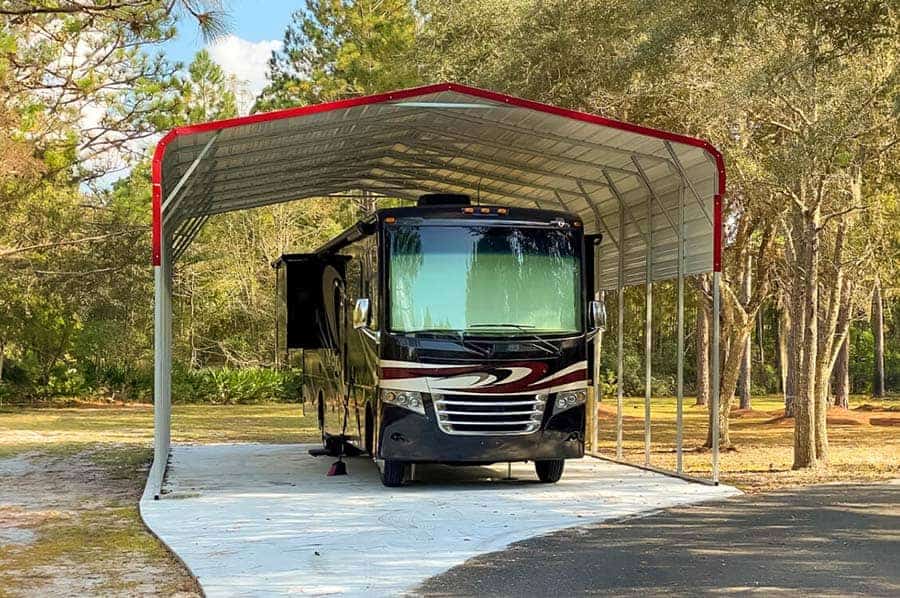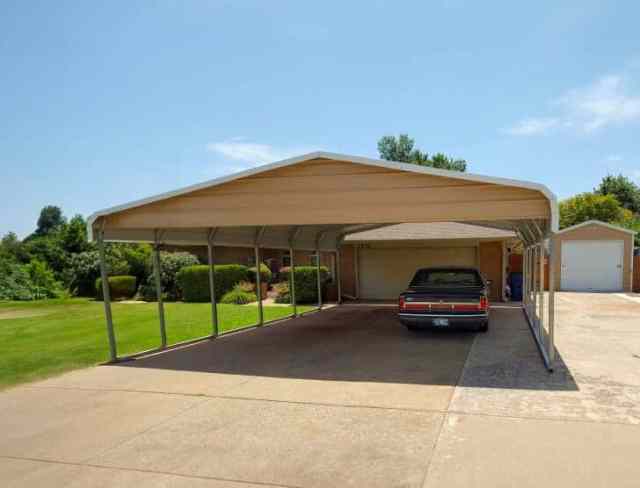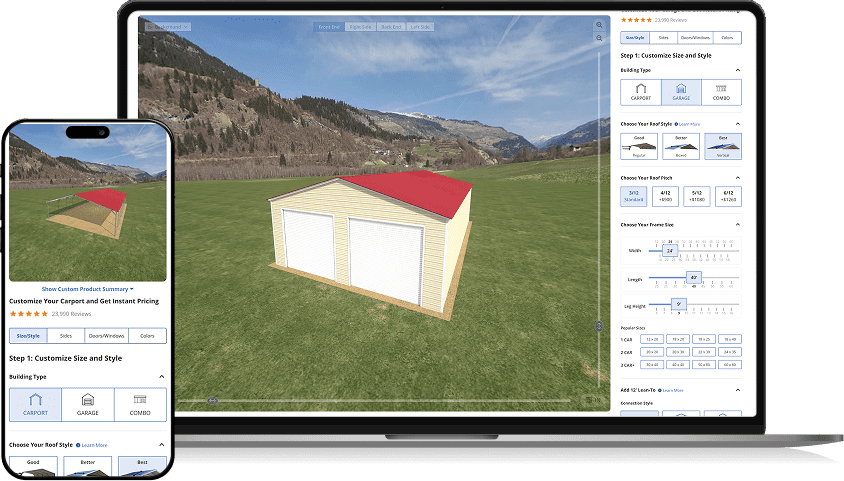In the previous step, you learned how close your carport can be to other structures and property lines. Now, it’s time to make a site plan. Take a tape measure and head outside to the location where you plan to install your carport.

Find a Level Spot
The area where you will install your carport must be level. Level isn’t the same as flat. Level means the ground doesn’t slope.
Find a location that is already mostly level, or find an area that you can make level. You will also need at least three feet of relatively level ground around the carport for the installation crew to set up their ladders.
If you need to grade your land to make it level, consider also grading the land around your carport so that it slopes slightly away from the building. A slight slope helps ensure that water flows away from the carport.
Look Overhead
Utility lines near the area you want the carport can be a safety hazard when installing a carport. Find a location that doesn’t have any utility lines overhead or within 20 feet of the site. If you want to put your carport anywhere near overhead lines, please give me a call to discuss your site before continuing.
Are there any trees near the place you want to put your carport? If so, trim limbs that might interfere with installation or that could fall on your carport. The peak of an average-size carport will be about three or four feethigher than the height of the legs. Make sure there is plenty of clearance for installation.
Mark Your Corners and Check Setbacks
Now you can mark the four corners of your carport with stakes, sticks, or flags.
Make sure your carport site is far enough away from property lines, your house, outbuildings, your well, and your septic field. Measure any uncertain distances to verify that your site meets zoning regulations.
Be especially careful about setbacks from property lines. Often, fences are not right on the property line. You may need to leave an extra foot of space from a fence to be safe. If you want to put your carport near a road, double-check where the property line is. Often, the public right-of-way is much wider than the road, and your property line might be 10 feet or more back from the road or sidewalk. Your local planning department can tell you how wide the right-of-way is.
Check Underground
If you have any easements on your property, you may not be allowed to build a carport above those areas. If you’ll be doing any grading or excavation, you’ll also need to check what is underground before you dig.
Anywhere in the US you can call 811 or visit call811.com to request all underground utilities around the site to be marked.
If there are any utilities near your building site, you may need to move your site to a different location.
Now you know how to create a thorough site plan. In the next chapter, you’ll learn how to literally lay the groundwork for a successful carport installation by planning and pricing your new carport’s foundation.




